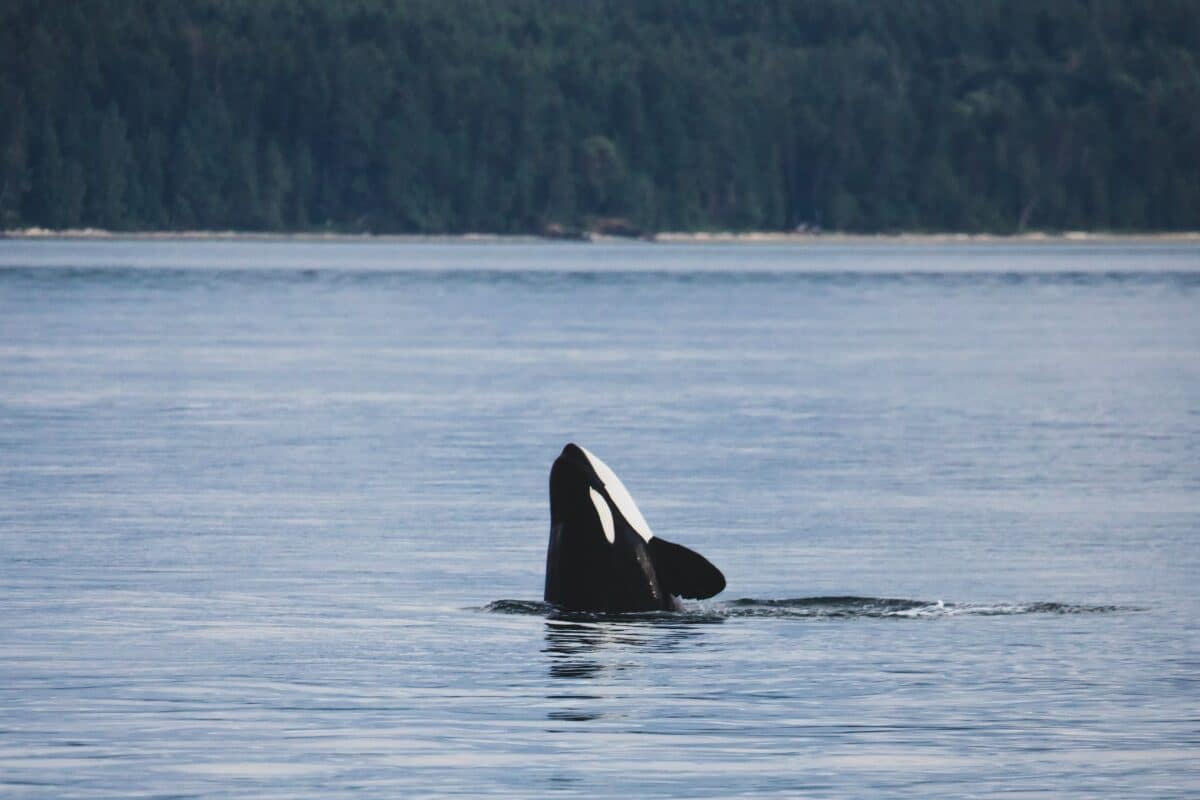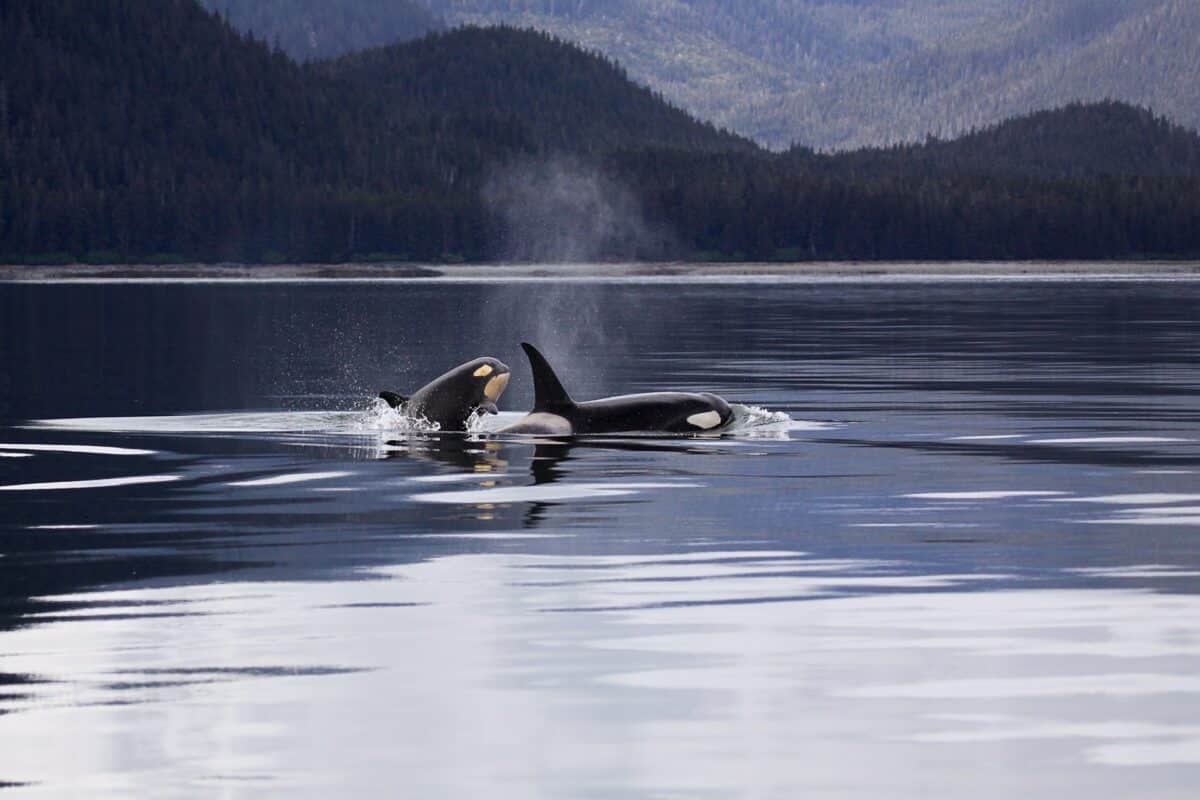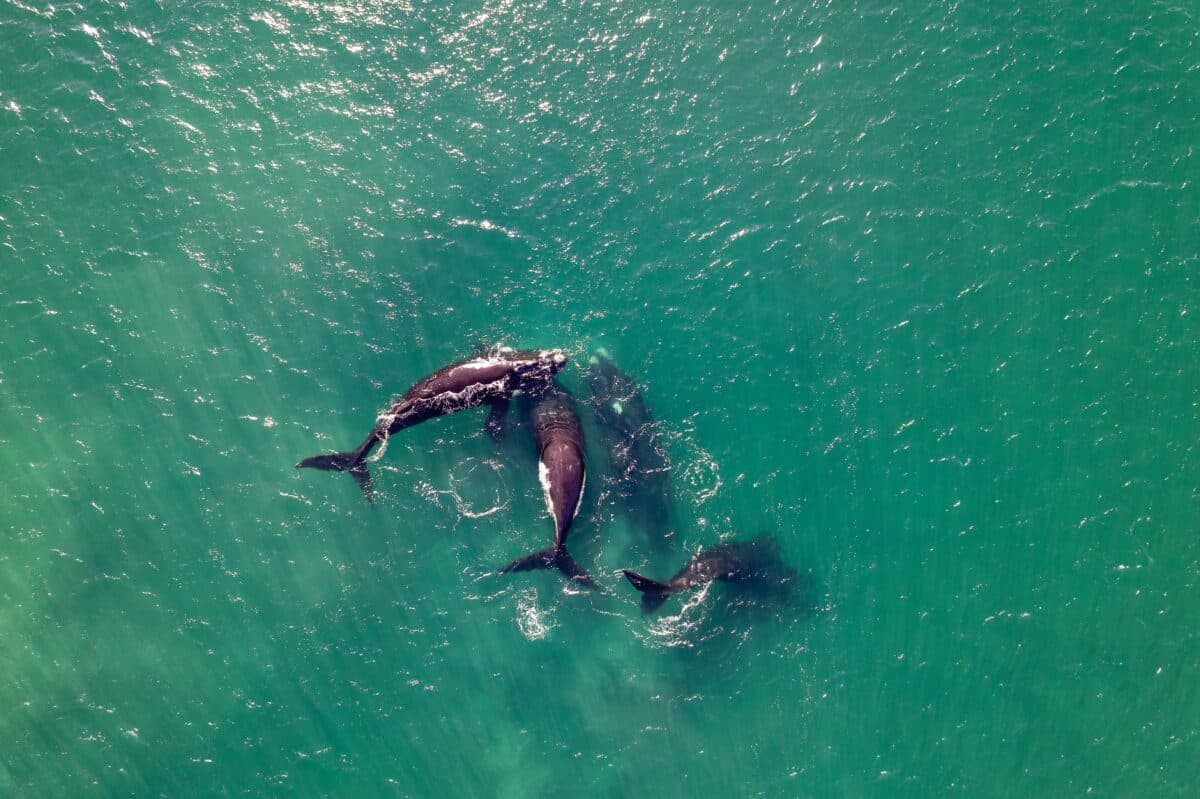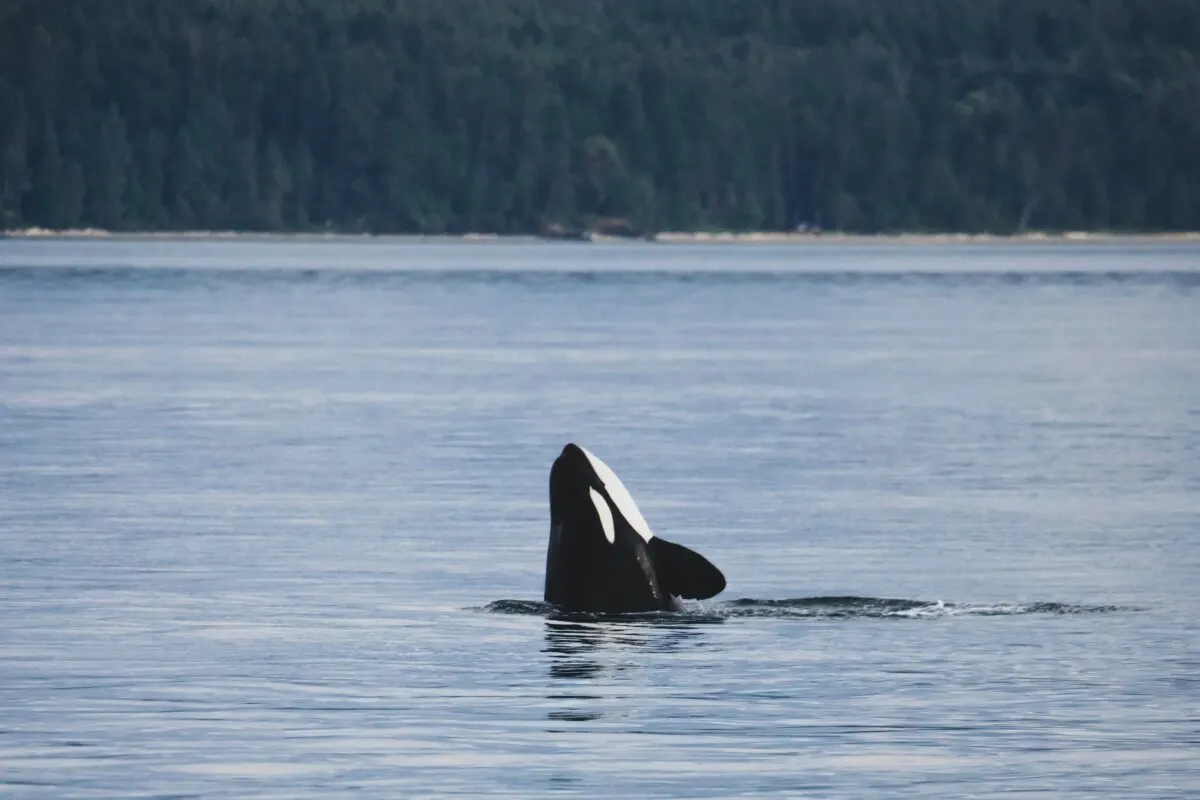Frosty, a male orca with a leucistic appearance, has black patches on his dorsal fin and the front of his face due to a genetic mutation. He is a member of a pod of transient or Bigg’s killer whales known as CA216 and has been spotted traveling along the west coast of North America.

On April 24, he was spotted near Newport Harbour with six other adult orcas and filmed by a whale-watching team. Despite his condition, Frosty appears healthy and will have an everyday orca life since these animals have no natural predators.
Key Points
- Frosty, a male orca who is three years old, is known by the name CA216C1 due to his leucistic appearance.
- Leucism causes partial loss of pigmentation, resulting in black patches on Frosty’s dorsal fin and face.
- Frosty belongs to a transient killer whale group known as CA216, which travels along the west coast of North America.
- Unlike resident killer whales, transient killer whales are more nomadic.
- Frosty was recently spotted near Malibu with six other adult orcas and appeared healthy despite his condition.
The Leucistic Orca – “Frosty”
Leucism, caused by a genetic mutation, results in a partial loss of pigmentation. As a result, Frosty has black patches on his dorsal fin and the front of his face. Other genetic conditions, such as melanism and albinism, can also affect an animal’s coloration. Melanism causes the entire coloration to become black due to excess melanin production, while albinism typically turns animals utterly white with red eyes.
Frosty is a member of a pod of transient or Bigg’s killer whales known as CA216. This group has been observed traveling along the west coast of North America, with sightings as far south as the Mexican border and as far north as Canada.
Unlike resident killer whales, who tend to remain in family groups in a particular area, transient killer whales are more nomadic.
On April 24, Frosty was spotted with six other adult orcas by the team from Newport Coastal Adventure, which offers whale-watching trips.
The sighting occurred around 13 kilometers (8 miles) off the coast of Malibu, near Newport Harbour. The team filmed and shared footage of Frosty and his companions on their Facebook and Instagram pages.
Although leucism can negatively impact some species, Frosty appears healthy despite his condition. As orcas have no natural predators, Frosty will live a typical orca life and reach adulthood without significant issues.
Importance of the Orca in the ecosystem

Orcas, also known as killer whales, are apex predators that play an essential role in the marine ecosystem. As top predators, they help regulate populations of their prey, such as seals, sea lions, and dolphins, which can have a cascading effect on the food web. This means that changes in the orca population can impact the entire ecosystem.
Orcas are also known for their intelligence and complex social structures, which have been compared to those of primates. They live in matrilineal groups, led by an older female and have been observed engaging in cooperative hunting and communication using a variety of vocalizations and physical gestures.

Furthermore, orcas are a keystone species, meaning their presence in an ecosystem disproportionately affects the other species. Their absence could lead to imbalances and even the collapse of an ecosystem. Therefore, understanding and protecting orcas and their habitat is crucial for maintaining a healthy marine ecosystem.
5 Fun Facts about the Orca

- Orcas are not whales but rather the most prominent member of the dolphin family.
- Orcas are found in all the world’s oceans, from the Arctic to the Antarctic, and are one of Earth’s most widely distributed mammals.
- Orcas are highly intelligent and have a complex social structure, with family groups called pods. Each pod has its unique dialect of vocalizations.
- Orcas are apex predators and have no natural predators except for humans.
- Orcas have the second-heaviest brain of all marine mammals after sperm whales.
Quick Summary
Frosty, a male orca with a leucistic appearance, has been spotted off the coast of Malibu with six other adult orcas. Despite his condition, he appears healthy and is expected to live a typical orca life.
Orcas, also known as killer whales, are apex predators that play an essential role in the marine ecosystem by regulating populations of their prey, maintaining a healthy marine ecosystem.
They are also known for their intelligence and complex social structures. Orcas are not whales, but rather the most prominent member of the dolphin family, and have no natural predators except for humans.
Thank you for following along with this article!
Next up in the animal-news world:
- Mass Deaths of Dolphins in the Black Sea Linked to the Russians
- Pregnant Hammerhead Shark Washes Ashore in Alabama
- 2,000 Endangered Rhinos to the Highest Bidder
- Discover The Most Massive Gorilla Ever (860 Pounds)
- Watch a Tiger taking on an Elephant in the Wild
- Discover the World’s Most Colossal Anaconda (33-Foot-Long)
- Mom and Daughter Takes Hen and Chicks to the Store in Backpacks - April 24, 2024
- Watch: German Shepherd thinks he’s dying at the grooming salon - April 24, 2024
- Watch: Cats Meet Babies for the First Time - April 24, 2024


